Flight to The Land of Enchantment
(including Albuquerque, Grand Canyon, Las Vegas, and El Paso)
for the LOE RV Fly-In
Added
10/16/2006 - 171 Flight HoursWell with the summer temps gone, we finally took the plunge and decided that we indeed would get our Grand Canyon trip in, with the excuse of going to LOE to make it happen. It turned out to be an incredible trip, full of great experiences both in the air and on the ground. Just below you can see our approximate route of flight, with the exception of the Grand Canyon VFR corridor, and weather avoidance zig-zags. Note that I use Golden Eagle FlightPrep for my flight planning. (I also use Golden Eagle Chart Case Express for my inflight charts, since it can import the routes) The trip distance was over 3000 nautical miles for the entire trip, plus some additional flying during LOE. I had a few distinct pleasures at LOE. First and foremost I got to swap seats with Vic Syracuse in our respective RV-10's, and trade the experience of flying eachother's plane. It's a valuable experience to learn from another builder and see a new perspective on both flying and aircraft layout, and to get this time in Vic's plane was great. Adding to the awesome experience was the fact that Josh from Direct 2 Avionics was there, so he came along with us for our flights. Josh is a very experienced pilot and an extremely good stick. When he flies your plane, you know it's in capable hands. Not only did Josh teach us a few new tricks and expose us to some new features of our Chelton EFIS's (it's amazing how much you can find when you dig into them), but he spent some time helping to get our altitude holding down to even tighter tolerances by tweaking our TruTrak Autopilots. Without a doubt, he knows his way around the Digiflight II VSGV and Sorcerer. We left with them flying even better than ever before. One more extreme pleasure was meeting Doug Reeves for the first time in person, and then getting some really professional photos of our planes besides. He's a good guy who gets really excited about RVation. More on LOE down below!
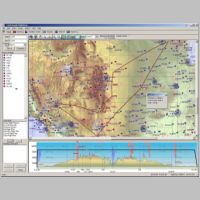
|
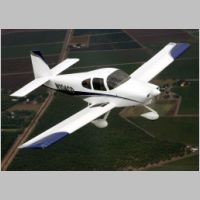
|
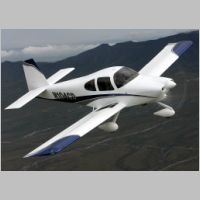
|
Flight Part 1 - Vacation before LOE
The day we departed was NOT your average "let's go on a cross-country trip" day. We had fine weather in our area, but all across the nation's midsection in our path around the South end of the Rockies was rain. Not just any old rain either, but icy cold freezing nasty rain. I wish I had some screenshots of the weather on that leg, but from Colorado to the East was a big mass of snow and freezing rain, and within 2 days of leaving my home area in Wisconsin got nailed by our first snow of the year. It was a great time to be gone. Given the lower ceilings, colder temps, and plenty of moisture, we elected NOT to file IFR, but just go VFR and let it push us lower and lower as we routed around the precipitation. Some people may not think this is smart, fearing the ol' VFR into IMC, and "scud running will kill you" arguments. This flight was neither of those. We let it push us lower and lower, while under the cloud deck we had an easy 40 mile visibility...easy to keep away from precip. We kept track of all of the airports we passed, in anticipation of a 180 degree turn if at any point the ceiling pushed us too low. What we ended up with was different though...we got pushed down to about 1000' but that was about it, and we only had to do about 1-1.5 hours under the decks before stopping at our first stop....KSTK. What a great place to stop. Small and friendly, with $3.00/gal fuel. It doesn't get much better than that right now. Performance wise, you can see that with accomodating for my -1 to -2kt TAS error that I was loafing along at 156 kts on 10.1 gph with some great CHT's in our first half of the first leg. This is about as slow as it gets in cruise for the most part, unless you get too far on the lean side of peak. Your power drops off quickly as you go further down the backside of the EGT peak.

|
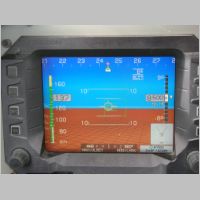
|
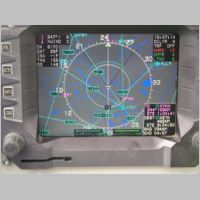
|
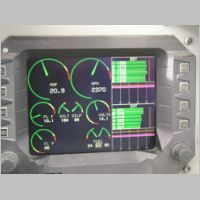
|
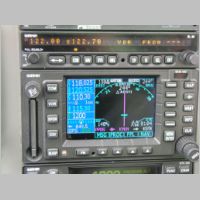
|
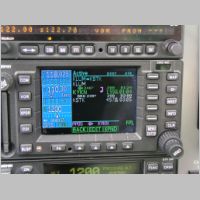
|
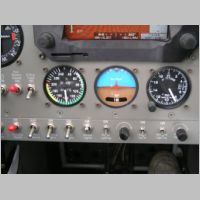
|
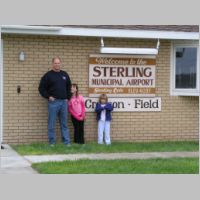
|
| After a bite to eat we were climbing out of STK, enroute to the Albuquerque area. We don't book hotels in advance usually, so we have flexibility with our flight path. We climbed out and soon found some breaks in the clouds as it turned scattered and then mostly clear, so we climbed up higher. The flight path was routed direct to a VOR and then along airways to the Albuquerque area so that I could avoid some of the higher terrain. The controllers around Denver and Albuquerque are very watchful and will check with you to ensure that you are aware of the high terrain areas...you're always under their watchful eye, which is nice. Our routing took us down the East side of the Rockies and soon we could see some snow capped peaks, as the terrain came out to meet us. We stayed tucked in along the mountains and as we reached higher terrains we got bumped around a little more. We eventually came around into Albuquerque and saw how cool it is that they're tucked into a mountain. I had a strange red circle on my Map page of my Chelton, which usually indicates a restricted area...but what it was in reality was a very cool surprise. First day, a seemingly short 975nm. | |||
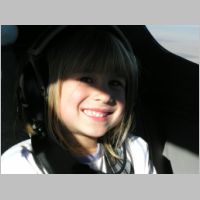
|
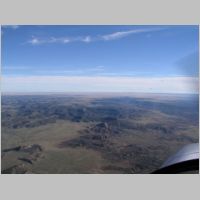
|
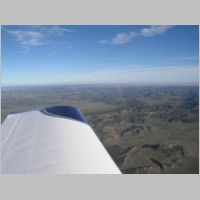
|
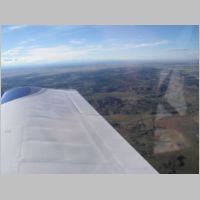
|
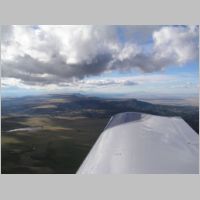
|
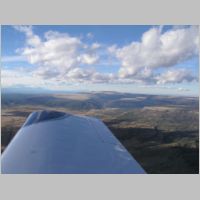
|
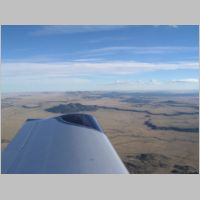
|
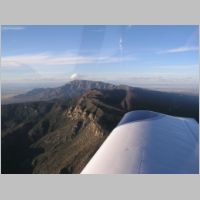
|
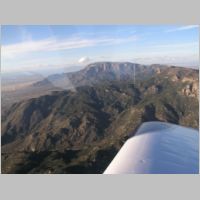
|
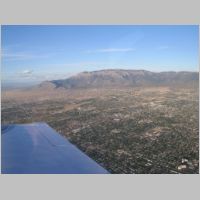
|
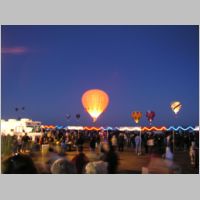
|
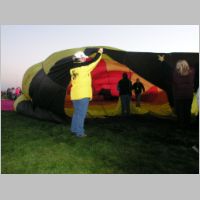
|
| Yep, we had just happened to show up in Albuquerque at the right time of the year to catch the Albuquerque Balloon Fiesta, the biggest ballooning event of the year from what I hear. There were rumored to be about 750 balloons in town and I was told that in the a.m. I should get up early and head down for the mass ascention....that was the reason for that red TFR, and we were lucky enough to be there at the right time! Check out some of the balloon photos. We literally were right next to all of the balloons as they filled them up and took off. There were some very awesome designs as well. If you've never been to the fiesta, I'd suggest it as a good thing to see. | |||
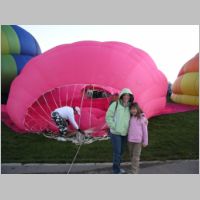
|
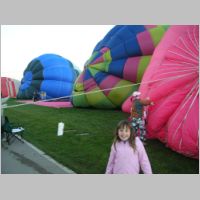
|
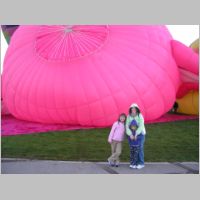
|
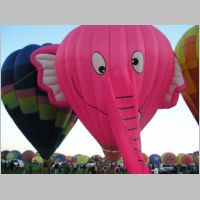
|
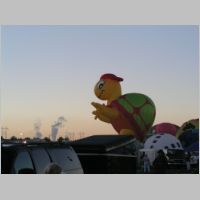
|
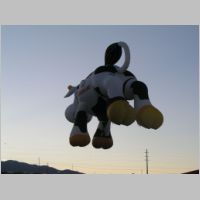
|
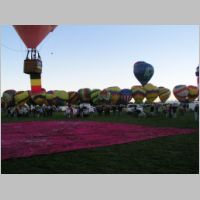
|
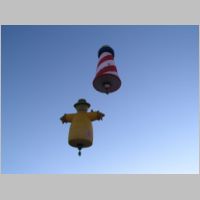
|
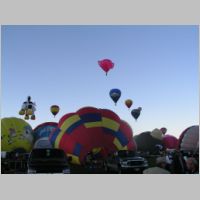
|
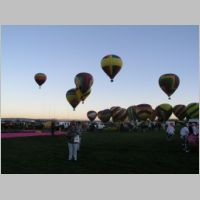
|
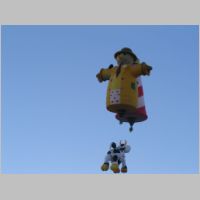
|
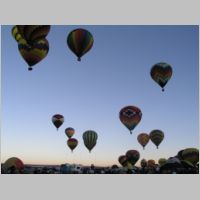
|
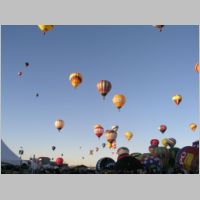
|
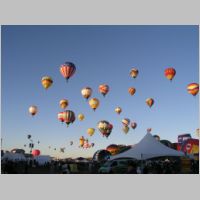
|
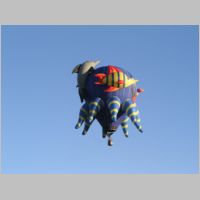
|
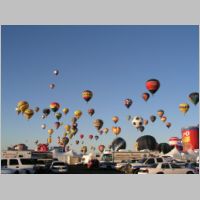
|
| After seeing a pile of balloons take off, we went back to the hotel and grabbed our stuff, only to find the balloons all over the city. One even landed in our hotel's parking lot! We had planned to fly over the Grand Canyon, and my research had indicated we really needed to get the Grand Canyon VFR corridor chart, so in the morning I found out that we had Pilotshop.com right there in downtown Albuquerque where I could buy the chart. Don't even try flying the Grand Canyon without it, and I'd highly recommend talking to someone who's flown it recently as well. With all of the VFR corridor fixes loaded into the Chelton so the Autopilot could allow me more sightseeing time, we took off for our Grand Canyon overflight on the way into our nearby destination, Las Vegas, NV. The Canyon overflight was truly amazing. You fly Northbound corridors at 11,500', and Southbound at 10,500', which keeps you above air tour traffic and safely away from terrain. We flew all but one of the North/South VFR corridors and then wound our way around to Las Vegas after getting back on some VFR flight following to make the ease of entry into their busy airspace easier. | |||
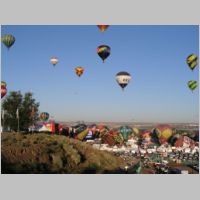
|
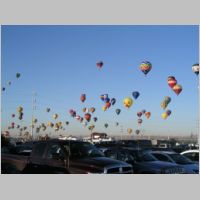
|
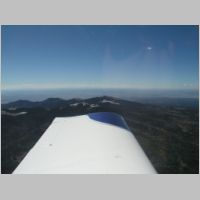
|
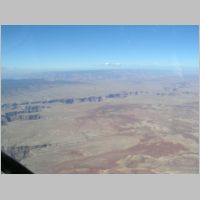
|
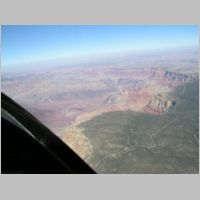
|
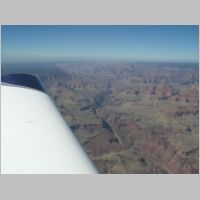
|
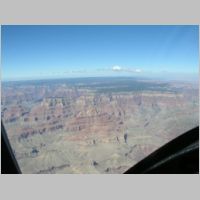
|
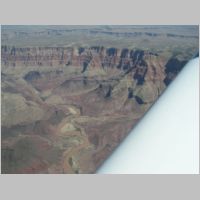
|
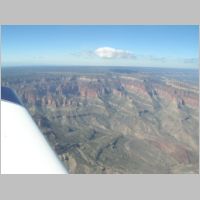
|
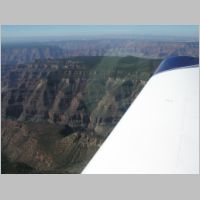
|
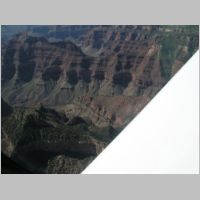
|
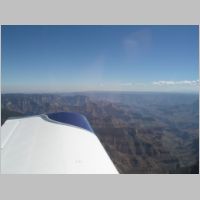
|
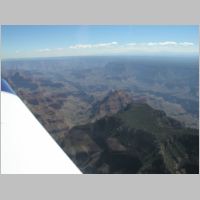
|
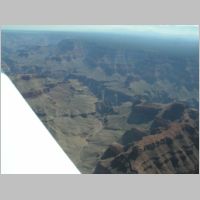
|
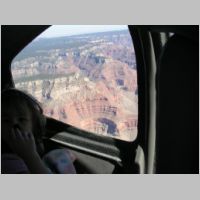
|
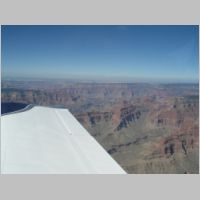
|
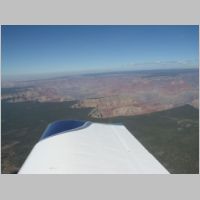
|
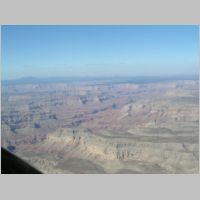
|
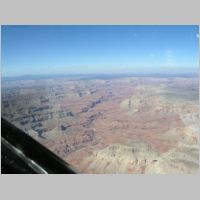
|
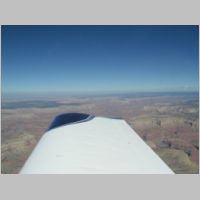
|
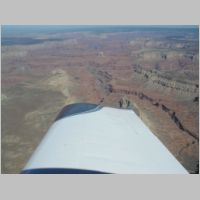
|
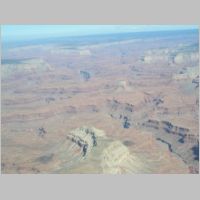
|
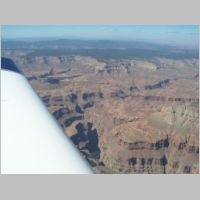
|
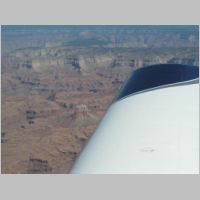
|
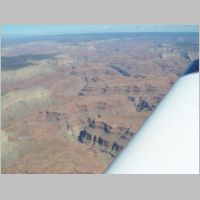
|
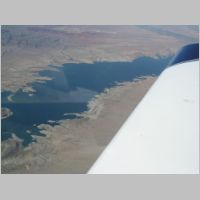
|
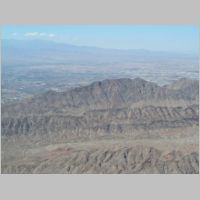
|
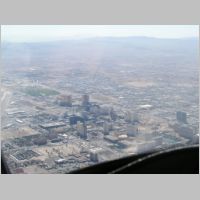
|
| Las Vegas is a great place to stop for the night, as hotels are pretty reasonable (I think we paid $67 + tax), and fuel wasn't too bad either at $3.53/gal at North Las Vegas. They couldn't route us around Hoover Dam on the way in, so we took what we could get. When you get into Vegas, be sure to look closely for the RIGHT airport, as there is an Air Force base, the big KLAS airport, and then little North Las Vegas which is much less visible. The kids really liked Las Vegas for it's lights and sights. Despite hearing of Vegas becoming "kid friendly" over the years, it's still a pretty sleazy and smoky town, but if you stay at the right hotels your kids will have fun. We found Excalibur much smokier than New York New York next door, and next time we'll probably try Circus Circus. We took in the Mirage volcano, the Treasure Island pirate show (not great for kids, unfortunately), and a few other things...basically just using Vegas as a sleepover spot while on vacation. Kids just love all the lights and neon there. Day 2, a really short 425 miles or so....in an RV-10 that's really nothing. | |||
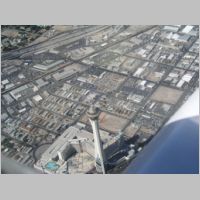
|
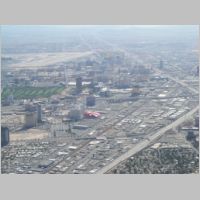
|
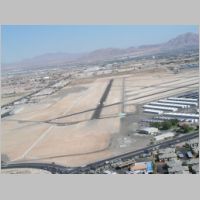
|
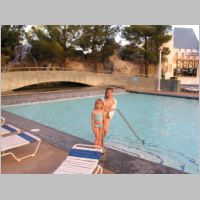
|

|
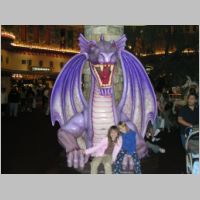
|
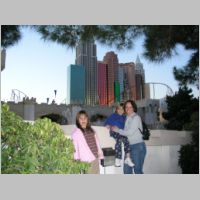
|
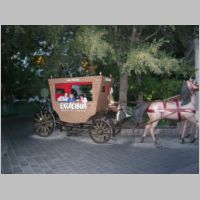
|
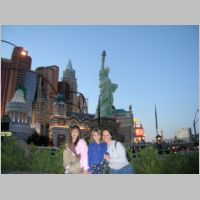
|
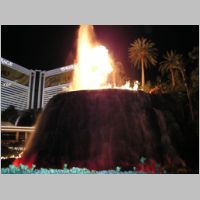
|
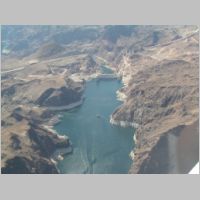
|
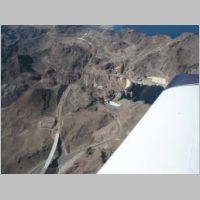
|
| On the way out of Vegas to El Paso for the LOE Fly-In, we got them to route us VFR flight following until we were clear of KLAS in an area where we could circle Hoover Dam. That is one huge pile of concrete. I recommend watching a documentary on the dam before you go, as it's really impressive to know some of the facts before you see it. They're currently building another vehicle bridge across the gorge right after the dam. Very cool. Some photos below of Lake Mead off to the side, and one of the Sedona area as we flew by. Sedona looked much better than the photos show. Day 3, another very short day at 500nm or so. We were among the first to arrive at LOE. | |||
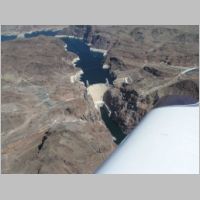
|
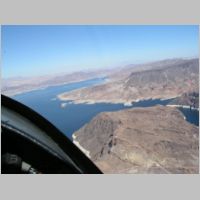
|
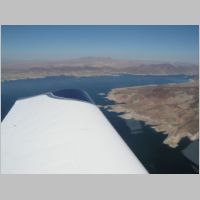
|
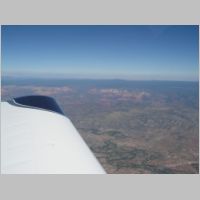
|
Flight Part 2 - LOE Fly-In and More
We got into El Paso during some great weather time. The countryside is amazing there. You have flat barren areas that stretch for miles, you have mountains, you have the city, and if you aren't careful, you have the Mexican airspace right there next to you that you could violate. Never having been to El Paso, we had to take some tourist time before getting right into the Fly-in spirit.
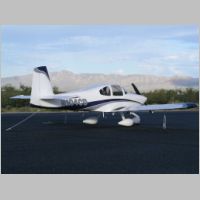
|
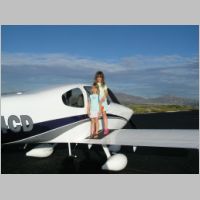
|
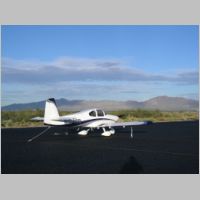
|
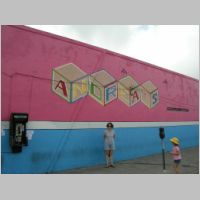
|
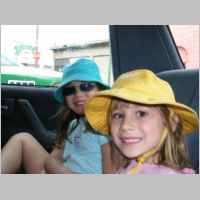
|

|
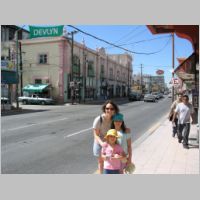
|
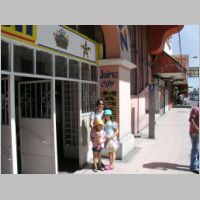
|
| Before
we went out to the fly-in, we took a trip downtown and walked the
bridge into Juarez, Mexico to shop in the City Market. We had
heard about the trolley that goes across, but I think unless you're
spending a lot of time there, that's not very economical, and the
easiest way to go is just walk the bridge over and grab a cab.
Everyone was very unimpressed with the not-so-Grande Rio
Grande.
It was more of a Rio Brook while we were there.
The kids
loved checking out the city market, and it was their first time being
around the "bargaining" style of Mexico. "How much?" "28 dolla." "Ah, no, that's too much....kids, lets keep looking around." "What, that's too much? It cost me $22 dolla, how about you give me $22 dolla and make you kid happy?" "Nah, that's ok, thanks anyway." "Daddy, we can buy something cheaper if that's too much." "Don't worry honey, we'll find one....hey, before I go, I'll tell you what, I'll give you 18 dollars." "Oh no, that's below my cost senior...I can't do that." "That's ok, we'll keep looking, but I'll offer you $20 dollars" "Ok, $20 dolla". So we went back over to Texas with a few goodies for the kids, and headed back to the airport to join in the Fly-in festivities. |
|||
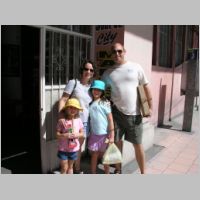 |
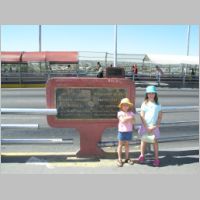
|
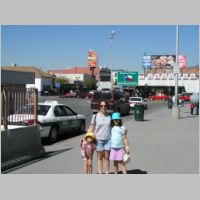
|

|
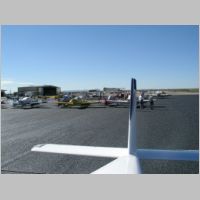
|
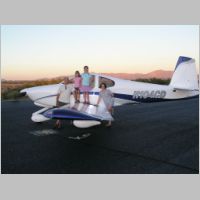
|
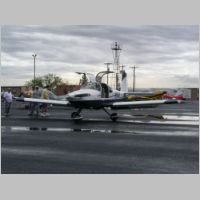
|
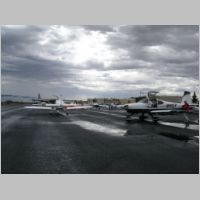
|
| The
fly-in proved to be a smashing success. There were over 100
RV's
there, including a total of 4 RV-10's. It was great to see
Vic,
Alex, and Russ with their planes, and even be able to fly by them.
I already mentioned above that Vic and I took turns in
eachother's aircraft. That gives a whole new perspective on
another plane. He's got over/under Cheltons, AirFlow
Performance
Injection, and a 3-blade MT prop. I'm the standard precision
injection, the horizontal Cheltons, and the 2-blade hartzell.
Never having flown behind a 3-blade prop, I was extremely interested to
see what it would be like. First off, let me tell you that choosing a prop was one of the more hair-pulling things I had to do along the way. With everyone talking about how much smoother 3-blades were, but yet the 2-blade cost much less, it was a very hard decision...and I never knew if I made the right decision or not...I just hoped I wouldn't kick myself some day for doing the "wrong thing". Not to mention all of the hype on both sides from all of the people who truly, honestly, did not have a CLUE what the truth would be at the time as to which prop would be faster or climb better. Really, there was never anyone who had 2 planes side by side and compared. Even the Van's test wasn't a flawless test. Let me tell you this straight away.... What I personally found was this: The MT and the Hartzell prop are about as identical as it can get when it comes to performance. This goes for climb, and for cruise. I'm sure there is some small measure of difference between them, but from what I see, you're very likely to have something OTHER than your prop be your limiting factor in speed between airplanes equipped with either of these props. As for vibration and smoothness, I'm not disappointed there either. There is a difference in the amplitude of the vibrations between the 2-blade and 3-blade props. The 3-blade definitely would have less amplitude, and therefore be called "smoother". But they are completely, utterly different in the way they feel, and both feel fine....absolutely fine. My prop, I should note, was professionally dynamically balanced, and when another RV-10 builder rode in my plane they mentioned the prop felt smoother than theirs that was not the blended airfoil type...so mine may be a very smooth 2-blade prop, or it may just be the blended design. Personally, I like the sound and feel of the 2-blade better since it's got a lower tone (no offense to any MT guys as it's a great prop), but since the vibration isn't bad in either, it basically has to come down to cabin sound or something like that to make your choice. The 2-blade makes the engine sound like it's loafing along in cruise, and although the amplitude might be greater by a tiny bit, a balanced prop is nothing uncomfortable with this engine. The 3-blade makes the engine sound like it's running faster, even though the engine RPM is the same, but you'll find that there is nothing in the cockpit vibrating at all. It sounds like a higher-pitched sportscar in the cabin. So if there isn't really a speed difference, or a huge smoothness difference, what about durability? This is where I was a bit surprised, myself. I've flown into grass maybe 15-20 landings so far. Vic lives in a place where he flies off grass. I originally made my choice on the aluminum Hartzell because I thought it would hold up better to the rain, dirt, grass, and things like that. Well, I'll tell you what, Vic's prop leading edge, with that metal implant on the composite prop, is in better shape than mine. Had mine not received a few nicks and dings in the first 170 hours, it would be harder to say this, but I do think the MT may just hold on the leading edge just a bit better than the aluminum one, because the leading edge is harder. Should you sweat it either way? Well, as with any of these decisions, builders probably will, but now that I've seen them both I'm comfortable saying that you can go either way and you'd be completely satisfied. While at LOE, Doug Reeves had the best of ideas. He brought his ultra spendy high-end gyro stabilized digicam along and wanted to get some photos. With that in mind, he had early on formulated his plans to round up 3 RV-10's for some aerial shots. Vic, Alex, and I all loaded some passengers in our planes and headed out for some air-to-air photos. Formation flying isn't for everyone, but with the experienced people here, I felt comfortable. Me being the least experienced of the group, I was stuck in the front slot of the echelon for the photos. Josh came along in the Right seat to keep close tabs on that right stick and make sure everything was done perfectly smooth....having that experience in the cockpit, it's hard to go wrong. We all took a few minutes to get some individual photos, and then came together for the echelon. Doug was waving to position us....#1 5 feet forward, 2 feet down.... and so on. He must have shot 200 or more photos during the entire shoot, but he got a couple that were absolutely fantastic, and many more that were still better than most people could ever take. There are some decisions to be made yet, before we can show you much of them, but check out the 2 thumbnails at the top of the page for a sneak preview. I'll be sure to post a note when they're able to be seen. After the photo shoot was out of the way, we headed back to the airport for a quick overhead break, and then we landed and regrouped for some more flying. |
|||
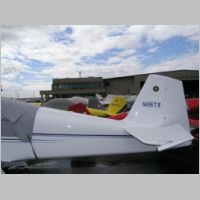
|
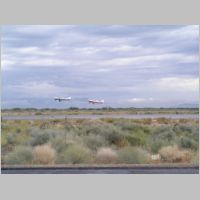
|
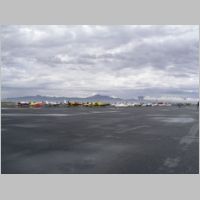
|
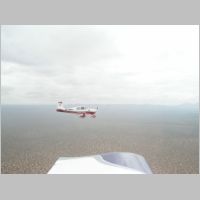
|
| When
I first took off, Russ Daves and his brand new RV-10 with the beautiful
paint was out giving rides, so I had him slide up next to me so I could
shoot a couple of photos. I'm pretty bummed that we didn't
get
better photos of his plane, but we were under ceilings, around showers,
and I was alone in the cockpit...so it was a little tough.
We'll
have to do it again sometime. Next in line for activities, after Vic got off the ground, was to line up and do some speed tests. The previous day, when Vic and I had flown eachothers planes, we tried to fly them at the same altitude, at the same power settings, and at the same RPM for climb. We noticed many things on that first day. One was that my CHT's were hotter than his. He had filed the casing junk from the cooling slots on his cylinders, and he had a couple small spots sealed up better, so there is a little work for me to do to see how it goes for me. Just what I needed...another project. ;) He also used Microlon in his engine and saw some pretty significant CHT droppage after using it...so I'm going to do that too. Another oddity was that although we were at the same altitude, for some reason on day 1 at LOE, I was seeing higher Manifold pressures. This one got pretty confusing, so the next a.m. before the formation flight we checked our MP on the ground with the engine off...and they compared almost perfectly. As it turns out, it may have been a fluke because on day 2 we ended up at the same MP while at WOT. During our tests on day 1, I was also inclined to think that maybe, just possibly, my RV-10 might have been 1-2kts faster...because at the same RPM and MP, my TAS read 164/5 and his read 163/4. This again was probably just a fluke. Before our testing, I thought my climb speed was better, as he climbed at 800-900 fpm in the conditions we were in...turns out that wasn't true either. Sure, I climb faster, but I used prop full-forward, and he used 2500 RPM. When I pulled mine back to 2500 RPM, it was 800-900 fpm too. This was getting to be fun, comparing the planes. So back to the story... We were cruising across the southwest at 5500', all 3 planes getting together. Our altitudes were pretty closely matched, but to our complete and utter misfortune, we didn't record our TAS, but instead looked at our IAS. I'm really kicking myself that we didn't do a better job testing this stuff out. As we got together, Vic called for WOT @ 2400 RPM (or was it 2500). We all 3 were very close. Russ was behind a little, but he has the less-broken-in engine. As we gained speed, we tried to keep our RPM's all in sync, and we checked our Manifold Pressures and found them still the same within .1 inches. You had to trim very well to keep the altitude constant, and keep everyone together. Our airspeeds grew, faster and faster, and Vic and I remained within a plane-length or two of eachother. Finally Vic called out that he thought he was pulling away from me, so I looked closely and sure enough it looked like he might be. I said "hold on, let me bump my RPM up a touch", and I increased it about 40-60 RPM. I said, "I might be gaining some ground." At that point, Vic's plane started to gain speed and stop falling back but instead started pulling ahead. I said, "well, it looks like I'm not anymore". Vic said he had just increased his RPM as well...again pulling him ahead of me. Now before you go and say "Yeah, but doesn't Vic have a higher power engine?", remember that we were at the same MP, and we were turning the same RPM, so the motor itself should be putting out the same HP. I do not know for sure if this holds true with one of us having 8.5:1 pistons and the other with 9.5:1 pistons, but I do know one thing...our fuel flows at that time were also very much matched up.....and fuel+air+rpm should all make power, and that should mean we were at very close to the same actual power outputs. So what can you gain from this?? Well, clearly there is not a significant difference between these 2 prop choices...but now we just have to see how the Aerocomposite prop does....and it's rumored to be faster. Again, if you are looking for knots to fill your ego, the prop choice may not matter as much as some other choices you make....like options, weight, comfort, external antennas, and things like that. I'm 1685, by the way, and he's 1670 or so....and Debbie Dewey who has a fast RV-10 that flew in the Airventure cup was 1700+. Oh, and I'll officially acknowledge and bow to Mr. "Speedy" Syracuse that he indeed has the faster plane....even if we would have to fly awfuly close together for anyone to notice. ;) I would bet that most RV-10's built with IO-540's will be within a pretty narrow range of performance. One thing for sure, Vic sure feels vindicated after all of the months he suffered hearing how his plane was "12 mph slower" with the MT. Sure looks to us like he isn't paying a penalty for his 3-blade prop! One last note about props....yes, a 3-blade may run higher speeds at lower RPM's, and a 2-blade may need higher RPM's to get the same speed. No attempt was made to use the absolute best RPM and fuel flow to get the best speed in our tests....so either prop/engine could possibly have done better. It was revealing though that both planes sped up with more RPM, and both Vic and I agree that you can add or subtract some RPM and it doesn't have all that much affect...just a couple of knots. So unless you're ultra anal about having the highest cruise speed possible, you may not end up with a significan't amount more than most RV-10's. We'll have to wait and see how the James cowl does now too. That ended our flying activities during LOE until our departure time the next day. Later in the evening was the LOE banquet, with the proceeds going to 2 charity groups. Unbelievably they raised over $14,000! My oldest daughter Colleen was the ticket picker for the raffle tickets, so if y'all were a winner, she was the one that helped you out....you can send your kickback check too... (just kidding!) It was amazing how many people showed for the event...and all of them were really, really GOOD people. |
|||
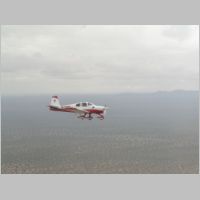
|
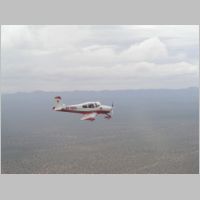
|
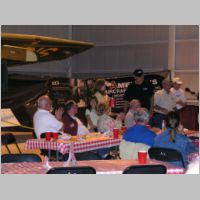
|
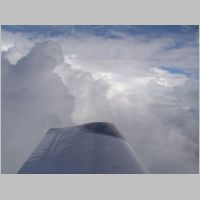
|
| The next day we awoke to our
surprise weather for our trip home. The El Paso area had
been run over by storms during the night, and they were still hanging
around. There were cells popping up all over, and some of
them were big. There were cells that were reporting 1.5"
hail, and all sorts of nasty stuff.....definitely a day that will make
a pilot pause, look at the weather closely, and then decide what to do.
When we got to the airport, there were many pilots hanging
out just watching the weather move by. RV-4/6/7/8/9's are
often VFR only, or not quite so equipped with what's needed for this
type of flying. I did see a tandem RV pilot looking at the XM
WX on his Garmin 496 though, and it was really pretty. The
flight planning showed that we had a little work to do. There
were a few cells in our way, but with extreme luck, they hadn't yet
moved Eastward enough to be right in my planned path, and they kind of
fit the dogleg shape necesary to allow me to route around the mountain
by El Paso to the nearest EWM VOR and then on to an intersection where
I could turn direct and avoid all the restricted areas.
In-Cockpit weather is the best thing ever invented for
cross-country flying. Vic was first off the field, taking an IFR plan to a fuel stop. After the trip he told me he was up and in the soup and didn't see ground again until it was time to land. I filed my flight plan with the FSS and got my clearance and it was time to go. On my previous IFR flights, I've used the TruTrak heading mode and altitude hold and climb/descent, but more or less been the interface between the EFIS and AP for climb and descent ops. This time, after using the EFIS heavily for the past 2000 nautical miles and picking up some additional nice tips from Josh, I decided it was time to watch it use it's capabilities. What better day to do it. I had filed for 9,000', but Vic knew I'd get 11,000'. I was given a departure heading and an initial climb to 5000', and eventually a turn direct to WHOLE intersection...bypassing my VOR fix. As I lifted off the runway, I had already set my departure heading bug on the EFIS, and set my target altitude of 5000', so I engaged the autopilot in GPSS/GPSV mode and watched it go. It climbed me up at roughly 1000fpm, perfectly on course. With the departure heading I was given, it was clear to me that if I stayed on heading for a few minutes, I'd be penetrating the big nasty cell, so I was very glad to hear my instructions to climb and maintain 11,000' direct WHOLE. A quick punch of DIRECT - WHOLE (higlight) - ENTER and then BUGS-TARGET ALTITUDE-11000-ENTER, and then the LNAV button (to get out of heading mode) and she was climbing nicely towards 11,000'. As we climbed higher and higher, we eventually popped right out of the side of a fluffy Cumulus cloud, and got the picture above out my window. Smooth sailing, too. Time to pull back that mixture, level it off and lean it out! Soon, as you can see below, we were still plowing Cumulus tops, so I dialed up the Oxygen and requested 13K'. We were still in and out of the tops at that altitude, but at least we got some good breaks in between. We still had to navigate around the cell, which required a 20 degree deviation Right to stay clear, and then as we approached the next big cell, we had to turn about 90 degrees and pass between the 2 cells (shown at the very bottom of the screen on the map page below). As the photos below right before the EFIS photos show, you could see forward enough to know you weren't about to enter the towering CB cells, so the visual picture out the window was a great relief. We stayed on heading for about 100 miles or so and then cranked it around about 60 degrees so we could finally go back on a direct heading to our destination. At that point, we actually entered and area where we were at 13K, and could see the ground to the East...but we were now getting a bunch of bumps, so the vis came at a price. After another half hour or so, we ended up over North Texas with no more high cumulus, but a really solid and soggy, thick undercast, and no more ground contact for the next hour and a half or so. We must have contacted ATC with heading deviation requests 20+ times on this leg...and it was great that they always complied with our request. |
|||
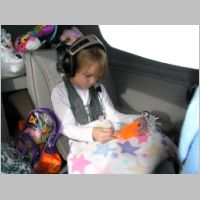
|
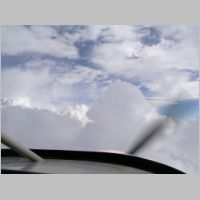
|
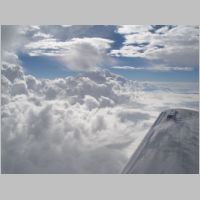
|
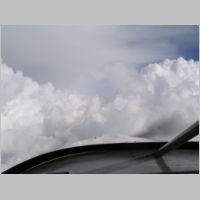
|
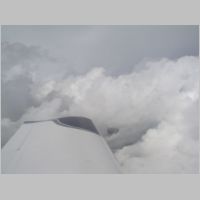
|
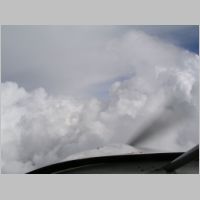
|
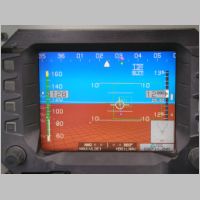
|
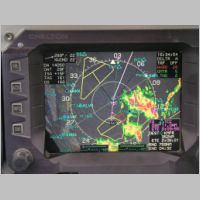
|
| Being in the clear gave me more time to play with the Cheltons. Here's what you can get out of some of these screens... First, performance wise, you can see 13,000', and with a corrected TAS since I know it's 1-2kts low, I'm showing 162-3kts on 9.2-3 gph. Also pretty cool is that at this point, I had already flown about 300nm, and if you notice the map page shows that my range is another 760 nm. Fly this plane LOP and you can really go places. | |||
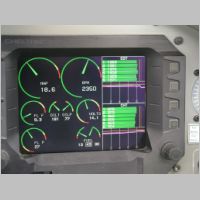
|
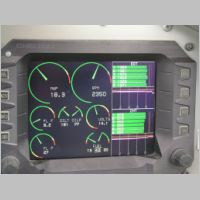
|
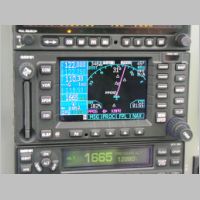
|
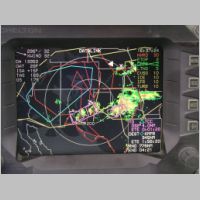
|
| As ATC came on announcing
the latest Airmets and Sigmets, we popped over to the datalink page and
turned them on for display. Check out all of those boxes in
that 4th screen....there are IFR boxes (red), Icing boxes, (blue), and
many more with turbulence, convective activity, and such. In
the last photo of the screen below, I expanded the textual weather.
You can scroll and choose which watch box you want to view
info on. (they blink when they're selected) You can
clearly read the info on screen. You know, one of the things
that always bugged me about aviation weather is that they give you
these boxes in text or verbally and they expect you to know where the
heck they're talking about. How many people are familiar with
every stinkin' VOR in the country so they can quickly interpret this
zone? Not me, that's for sure. Well, this WSI on
screen really takes the work out of it. You now see your
position, and you can see the zone, and you can read the airmet/sigment
info. Very sweet! One other page that I hadn't
ever seen until Josh pointed it out is the trip routing page (don't
know exactly what it's called). It's also very nice, showing
your waypoints, headings, distance, ETE, fuel, and the zulu
time. I haven't explored this page to it's full extent, but I
used it for what I could easily get out of it. Now back to the flight! So I'm now over the solid undercast. I check back with Flightwatch as to the destination weather to see how it's holding out. What I hear isn't the best of news. Ceilings are 300-1200 over all of the area airports. Knowing that my chosen airport, KMPR, had reasonable (in today's prices I guess) fuel at $3.50/gal, I had chosen that as my destination...despite the fact that it's lowest approaches were GPS approaches with something like 466' minimums. I was getting a little bit worried that maybe we'd end up going missed and landing somewhere else. As I got my step down descents, I requested direct to a VOR for the VOR transition into the GPS approach for my GPS-18 approach at KMPR. With that entered, I was able to load the full approach into the Chelton so it was ready to go. As we descended, somewhere between 6500 and 6000', we were stuffed into the clouds, not to see anything until landing time. Ground level was about 1495' or so. I pulled up the approach on my tablet for review of all minimums and fixes while I was still 50 miles out. Once inbound from the VOR, I punched in the lower target altitude and the airplane descended perfectly to the altitude needed by the IAF for the procedure turn. I had the airport loaded into the GNS-480 as backup, and continued the procedure turn and begin my approach inbound. I watched the Chelton's VNAV altitudes compared to the charts, and in one case the Chelton had me staying a little higher than the chart did. What to do, what to do.... Well, I decided since I knew my position I would just punch in the stepdown altitude. This turned out to be an unnecessary move, as the chelton knew where it needed to be at the next fix, and it would have brought me on a more stabilized approach with less "steps" and more smooth descents. I flew the approach inbound, monitoring my position on the map page and the HITS, eventually going to HITS only as we approached our minimum altitude. A couple miles out, we started getting spotty ground contact, but were still in the clouds. As we got to our MDA, my wife called the runway lights, so I kept the descent going and looked up, and by the time I did and got a full view of the ground, we were below the MDA. What a great thing to have co-pilot with me to call those lights! So it doesn't get any lower than that and still stay do-able. We popped out within about 30 seconds of touchdown, and pulled her to the pumps for fuel. What a TRIP so far! After we fueled up, we filed another IFR plan and this time requested 9000', as we were on our last hour's of pilot-only oxygen by this point. We motored along, popping through the occasional cumulus cloud, becoming more frequent as we got closer to home...even blowing through some wet rainy ones once in a while. It was on this leg that we FINALLY saw some traffic on the trip, with a Delta jet nearby on approach, and a Mesaba turboprop zipping along below us. It feels good when you know you're up there with the big guys, and to the controller you're just another blip. ;) We got a good letdown through the clouds and popped out 10 minutes from home. The total trip was about 6 to 6.25 hours, and probably close to 1175nm in distance. It was extremely cool to know that an RV-10 could get you across the country like that! Check out the MapPoint snapshot at the end....the drive by car was about the same path, but was 25 hours long! After I landed I was happy to hear that Vic made it in at about the same time, Doug and the gang had made it almost all the way but finished the trip by car, and Russ had made it home with an IFR letdown from VFR on top with 1500' ceilings, only to drive home from the airport under 500' ceilings. It was great to know my pals were safe. It was also great to be safely home with my family. There were so many times on this trip that I marveled at modern technology like the Chelton, the beautiful RV-10 design by Van's, and the smooth and solid engine by Aerosport...which by the way got by on all 23 hours of flight from it's pre trip oil change without requiring the addition of oil. Beautiful! To those who are contemplating a family airplane, the RV-10 is just the ticket. Fast enough to get you there without too many "are we there yet"(s), large enough to haul a couple of good sized suitcases and all your Mexican treasures with no W&B issue, and smooth enough to impress all who fly it. The kids thoroughly enjoyed Albuquerque, Vegas, Mexico and El Paso. In the short 8 months that we've flown the plane, they're now up to 22 states visited out of our easy 48. Maybe soon we'll get to the SouthEast and NorthEast and fill in some more. Final trip day complete, about 1175nm - a simple (with proper weather) day trip by RV-10 |
|||
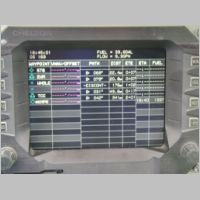
|
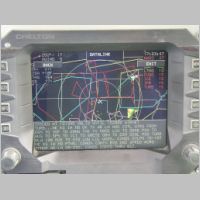
|
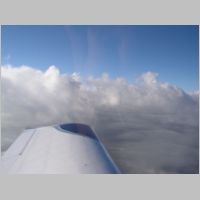
|
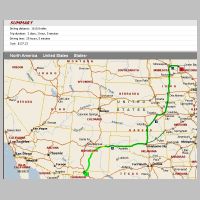
|
SITE HOME | N104CD Home